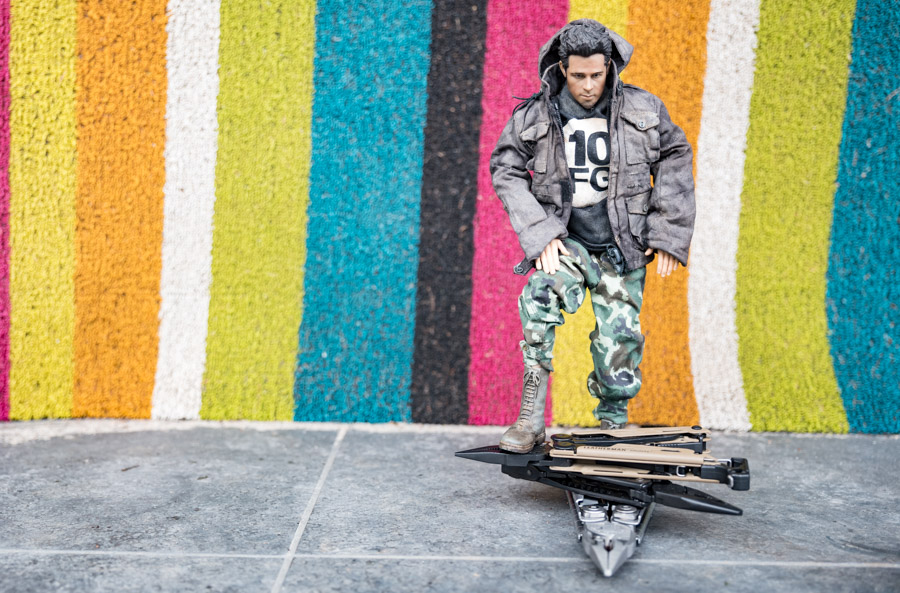Over the years I’ve admired the workmanship, clever designs and just how cool multi-tools actually are. But I’ve never taken the next step and purchased one. Well now I finally have and I want to share with you what I learned in making the big decision about what would be my first multi-tool. Better late than never right?
How did I choose my multi tool? I spent many many hours researching all the details on the internet as well as watching videos until my eyes were red. I researched all the popular multi-tools offered by major brands. So if you’re thinking about buying your first multi-tool or maybe you want to add another multi-tool to your collection, I think you will be interested in how I went about deciding what was the right multi-tool for me. If you want to go straight to some of the most popular multitools available click here.
It’s all in the name…..
After all, they’re called multi-tools for a reason. That means to decide the multi-tool that’s right for you, you need to choose between tools that include an almost limitless combination of other useful tools. The first step in my search was to find out what the multi-tool market has to offer. I wanted to go somewhere that has a really good selection of multi-tools and multi-tool brands.
An obvious place to start is, of course, Amazon so that’s where I went. And that’s also where I started to realize the decision about which multi-tool to buy was going to be harder than I thought – but because there is so much to choose from also awesome fun! That choice thought brings with it confusion. If you’re new to the multi-tool like I am, it’s very confusing to decide what’s important unless you understand what the benefits of each tool is and whether you might actually use it. Do that though, and you will be able to drastically narrow down your search choices.
So that’s what this is all about. How I went about narrowing down my purchasing choices down to finally make the jump.
Before I get into these great tips, the first thing I decided was not to let anyone tell me what multi-tool is best for me. The best multi-tool is the RIGHT multi-tool for you. It’s good to look and listen to what others have to say but don’t let anyone tell you what’s the best multi-tool, only you know the answer to that.
Since I wrote this, I’ve had a lot of time and testing with a few dozen multi-tools. And I’ve come to know what I like and what’s great in a multi-tool. If you want to see which multi-tools I rate as the best in their category, have a look at my Recommended Multi-Tools page.
Follow these 10 easy steps and you’ll soon have a short list of multi-tools that you’ll be itching to get your hands on. Let’s go…..
-
What’s your interest?

What’s your interest?
Do you have a particular interest, hobby or activity that you need specific tools for? There are multi-tools that are aimed at specific activities like fishing, hunting, shooting, camping, motorcyclists, cyclists, survivalists or multi-tools without a blade. If you are a keen angler then you might start your search by looking for multi-tools designed for fishing for example. If you don’t have any particular uses for your multi-tool that’s not a problem. It means your search will include all the multi-tools that aren’t for specialized interests.
2. Size matters
Is that a multi-tool in your pocket or….
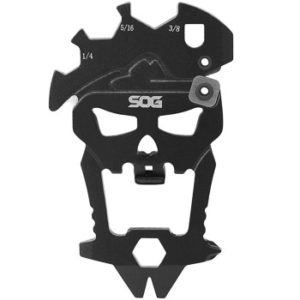
The things you want to do with your multi-tool and how you want to carry it are important factors in deciding which multi-tool is right for you. A multi-tool is no good if you don’t have it with you when you need it right? So you need to think about how you are going to carry it. Are you going to carabiner it to your backpack, clip it to your belt or to the inside of your pocket? Or do you just want to hang it on your keychain? Multi-tools come in sizes from micro to small/medium to ‘full size’. The smaller and easier to carry they are usually mean they have fewer tools and the tools they do have are smaller for smaller jobs. And the reverse usually applies. If you just want to open your online purchase parcels than a small blade on your keychain will be fine but if you want to go hunting with it, you’ll probably go hungry.
3. The dent in your wallet
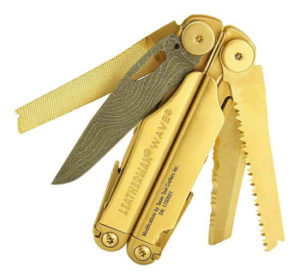
Price is always important in one way or another. Price can also be a great way to help you limit your multi-tool search and selection. “You pays what you gets” can be true but not always. If a higher price buys you a higher quality multi-tool that lasts a lifetime then a higher price might be worth it. But if a higher price doesn’t get you better quality products then you’ve just wasted your money. Pictures on a website won’t help you judge quality but you can find and read reviews and user comments or watch video reviews of the model you’re interested in. Then decide if the price is worth the dent in your wallet.
Once you’ve decided on the multi-tool for you, shop around to find the best price. If it’s a popular brand and model, a search on the interwebs is likely to give you some good price choices. You can compare it to the price at your local store as well. Don’t forget to add any shipping costs to the price.
What have we decided on so far?
You’ve decided whether you should get a multi-tool that’s designed for your special interest or if you don’t have one, you’ll be most likely searching for a general purpose multi-tool. You’ve decided how you’re going to carry your multi-tool with you so you know what size you’re looking for. And you’ve got an idea how much you want to pay for your first multi-tool. If you’ve made these decisions then you’re already well on your way to choosing the right multi-tool for you.
Now let’s look at the major common tools included in most multi-tools and how they can help you narrow down your search.
4. The Pliers
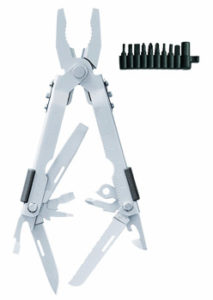
A set of pliers is the most common tool on a multi-tool and they usually take up the most ‘real estate’ and are the heaviest of any of the individual tools. Pliers are most common
because they are such a useful and versatile tool to have with you. They can help you do literally hundreds of tasks from tightening a nut to bending a nail or crushing your finger. The last one is not recommended for everyone.
All pliers aren’t the same though. Different types of pliers come with different multi-tools adding to the confusion about which multi-tool you should choose. Multi-tool pliers are usually either the standard blunt nose pliers or they’ll be needle nose pliers. The blunt nose pliers are great for gripping and squeezing something while the needle nose is better for finer work where you might want to get into a small gap or grab something small and delicate. You’ll need to decide which type of uses are going to be more common to you or take a guess at which type of pliers will be more useful to you.
A lot of tools on your multi-tool will be able to do more than one thing. So on top of considering the type of pliers, it’s just as important to consider the other tools included on the pliers themselves. The most important are the wire cutters. Of course, they cut wires but they are also useful for snipping off lots of other things. Wire cutters will either be replaceable or they won’t be. If you think you’re going to be using the wire cutters frequently or you want to cut thicker wire, you should really consider a multi-tool with replaceable wire cutters. The replaceable wire cutter blades are cheap to buy and quick and easy to replace with just a couple of screws. They’re
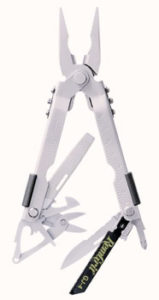
probably not essential but if you do use the wire cutters and damage the cutting blade you can’t do anything about it if they can’t be replaced. It’ll restrict what you can do with your multi-tool in the future – that’s the opposite of why you have a multi-tool in the first place.
One last thing to consider when looking at the pliers included, some are spring loaded and some aren’t. If they are spring loaded, it
means you can easily use them with one hand because when you squeeze them shut, they will spring open again in your hand so you can squeeze them again. You get the idea. If they aren’t spring loaded, you might have to use your other hand to manually open them again after you’ve squeezed them. The way I look at it though, having them spring loaded is good but it’s not essential. If I was happy with the other aspects of the plier design and quality and the rest of the multi-tool functionality suited me, the pliers not being spring loaded wouldn’t be something that stopped me from buying that multi-tool. Spring-loaded is “nice to have” rather than being essential.
5. The Knife
Some will argue the knife is the most important tool on your multi-tool while others will argue the pliers are. As I say, it doesn’t matter what other people think, it’s what most important to you and how you want to use your multi-tool.
Your first decision about the knife you want is whether you actually want a knife at all. Most people will – but say you want to carry your multi-tool with you when you fly. The TSA has some strict restrictions about what you can take on the plane with you. If you want to find out about what you can safely take on a plane or to ‘no blade’ locations and the 5 best multi-tools with no knife read my article here.
Not all multi-tool knives are the same. Some are straight, some serrated and some are a combination of straight and serrated. Some multi-tools have two blades. One
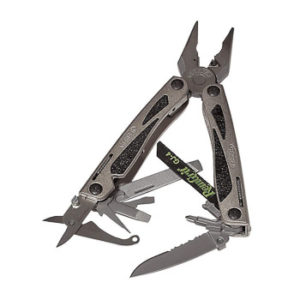
a straight blade and another separate serrated blade. There are different types of blades because a straight blade and a serrated blade are generally best for cutting different types of things.
A straight blade is great for cutting most things. The exceptions are things like rope, especially rope that’s made of synthetic type materials or plastic as a straight blade will struggle to grip on rope and may just slip off. The advantage though is that a straight knife doesn’t catch on the rope and won’t fray the edges. Straight blade knives are meant to be used by pushing down firmly on the thing you want to cut. The amount of pressure you use depends on how sharp your knife is and how hard the thing is you’re trying to cut.
Serrated edges are those blades that look like they have saw edges. They are best at cutting through things that will cut with pressure being applied back and forwards – logically enough, like a saw. Things that have a rough surface, are textured or would just be damaged or squeezed if you pushed down hard with a straight knife are great for being cut with a serrated edge knife. Think of how you cut a tomato or a loaf of bread or a piece of fabric.
You can see that straight blades are good for things you cut with a pushing down motion while serrated edge knives work best on things that cut by using less pressure but instead a backward and forwards sawing motion.
It’s pretty hard to anticipate what types of things you’re going to need to cut in the future. If a multi-tool is going to include a knife, the reason it will more commonly include a straight edge blade than a serrated blade is that if your straight blade is sharp enough, it can cut most things. It might take a bit more time and care to achieve the same result than a serrated blade takes to do the same job on something – but it can still be done. Again, think about cutting a tomato, if your straight edge knife is sharp enough and you don’t use too much downward pressure, you’ll still be able to have perfectly acceptable sliced tomato on your campfire hamburger.
Some multi-tools come with a combo blade. The top part of the blade is straight while the lower part is serrated. Some people think this is the best of both worlds blade while others think it’s the worst of both worlds! Because the blade can’t be too long and they have to share the length, it means the straight part can’t be very long and neither can the serrated part. At a pinch, they may get you out of a tight spot but they won’t be the best blade for a task that’s suited to a longer straight blade or longer serrated blade.
Then there are the multi-tools that have two blades, one straight and one serrated. This is the best of both worlds but two blades take up real estate and you need to make a decision whether that’s the best solution for you. I’ll say it again, the best multi-tool is the right one for you.
6. The Scissors
Scissors are another one of the main tools that are included on multi-tools – or they aren’t. They take up a fair amount of real estate so you need to decide whether scissors are something you can see yourself using on a regular basis.
Scissors come in various sizes too. Some have blades so small, you would only want to use them for very small jobs. Others have very short handles, which make them difficult to hold and use. And some are spring loaded which make them easier to use one handed and some are not.
So that’s the decision you need to make. Do I actually need scissors at all? Don’t forget, if you have a good knife blade on your multi-tool, especially one with a sharp tip, you can do a lot of the jobs you would use scissors for. The knife may not be as quick and convenient but it will get the job done. And if you think you do need scissors, what size scissors do you think you’ll need so that they are useful for you?
That’s the main tools. Pliers, Knife Blade (or Blades) and Scissors. You need to have a good hard think about which of these tools you need or not and decide whether they should be included in your first multi-tool. If you do that, it will help you enormously in narrowing down the multi-tools you consider for your first purchase.
7. The Secondary Tools.
OK, if you’ve followed this far and you’ve made the major decisions about what you need in your first multi-tool then you’re well on your way. You will have a much smaller list of ‘must have’ features for
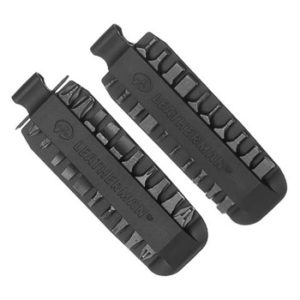
your first multi-tool purchase. There are another 148 – or some ridiculous number like that – other types of tools that could be included in a multi-tool. These are the types of tools that are a secondary priority.
Secondary tools are tools like a bottle opener, wire stripper, awl, file or hex drivers.
In this category, I also include flat head and Philips head screwdrivers. The reason these are secondary tools is that flat head and Philips head screwdrivers come in a range of sizes and you need the right size to do the job. You can’t use a flat head screwdriver that’s too small for the screw for example. It will damage the screw head and make it difficult to remove. And of course, if you have only a Philips flat head tool, Murphy’s Law says that the screw you find you want to tighten will be a flat head!
Whether you need to consider what secondary tools are on the multi-tool comes down to the usual reasoning – the best multi-tool is the right one for you. If one of the reasons you want to carry a multi-tool is because you have a classic car that sometimes needs a bit of electrical rewiring on the roadside, a wire stripper suddenly becomes a must-have tool. Or maybe you just drink a lot of bottled beer and you can’t do without a bottle opener hanging off your belt.
Researching secondary tools is the biggest trap and it’s where I got the most confused trying to decide which was the right multi-tool for me. It’s easy to caught in trying to find the
absolutely perfect combination of tools in the one multi-tool. You’ll find yourself looking at a secondary tool you’ve hardly ever or never used before in your life and thinking, “hey that tool would be handy to have around”. If you find yourself thinking like this, the answer is you probably don’t need to have it. It doesn’t mean you wouldn’t buy that particular multi-tool. But you would only buy it if it meets the other important criteria we’ve looked at here.
If you have specific needs for a secondary tool or two, use all the key criteria (size, pliers, knife etc) plus these secondary tools to help you narrow down your search for the best multi-tool.
8. The best multi-tool design
Multi-tool designers spend a lot of time choosing just the right tools to include and the right functionality and usability of the tools. Because that’s very important. It’s no good
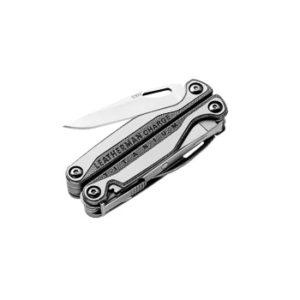
having tools that don’t work as they should or are hard to get to or hard to actually use. Nobody wants the handles on their pliers to have sharp edges so they can’t squeeze them hard without a pair of gloves on for instance.
There’s one big design feature that you should decide on that will help narrow your choices. Generally, multi-tools are designed in one of two ways. They are designed to have some of their tools accessible when the multi-tool is closed or they don’t have any tools accessible when it’s closed. Most of the tools are stored inside the handles and some designs allow you to get quick access to important tools from the outside while it’s closed. So you can quickly get access to a tool like your knife. It seems obvious to me that you would want quick access to some of your more commonly used tools but some people prefer all their tools to be protected inside the multi-tool with no chance of them opening by mistake or being damaged.
Quick access and the tools you can get quick access to is either an important feature to you or not. Deciding on this key design aspect
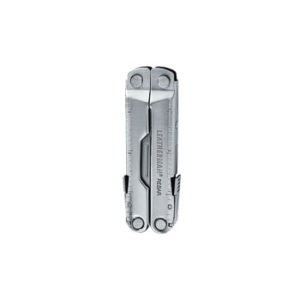
will help you to narrow your choice of tools that fit your perfect first multi-tool purchase.
Another common design feature that’s worth thinking about is changeable driver bits. A lot of multi-tools have changeable driver bits that you fit into a driver tool. So the multi-tool might have a flat head screwdriver that can be changed out for a Philips head bit giving you two tools for just a small amount of real estate. Some of the changeable bits could be stored on the multi-tool but usually only one or maybe two.
More commonly though a range of changeable bits needs to be carried separately. That means for this design to be really useful you have to carry another chunk of metal. That’s not a big problem if you intend to carry your multi-tool in a bag or backpack. There is a risk of losing it or one of the important bits which reduce the usefulness of the tool but you could say that about losing your whole multi-tool I guess. The problem really comes if you want to carry your multi-tool in your pocket or on your belt. It makes everything more bulky, heavier and awkward to carry around. If you’re not prepared to carry an extra kit of bits (bit kit) around with you then you should decide whether the heads that you can carry actually in the multi-tool are the ones that will be useful to you.
There are a couple of other upsides to having a multi-tool with changeable bits. If the standard bits aren’t the right ones for your purposes, at least you can buy the additional pack of bits and choose the ones that do suit. And finally, if you do lose one of the bits, it’ll cost you, but at least you have the option of buying another pack of bits.
9. The final design feature – how it looks.
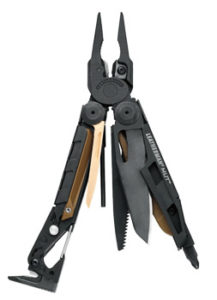
I know we’re all practical types who are too tough to worry about how something looks. We just want it to work right and do its job. That’s true for of a lot of multi-tool buyers but there are also a lot of us who care about not only how it works but how it looks too. Designers know this so they put a lot of effort into making a multi-tool that looks good. If it looks good and works well, they know buyers will appreciate it and it gets ‘pride of ownership’ points. Let’s face it, why do we see the trend of multi-tools in all black or black and silver. Black doesn’t really improve its functionality but it sure looks combat cool. And look at tools like Leatherman’s Skeletool range with its circular cut-outs. Yes, the cut-outs reduce weight but they also look good without impacting how well it does its job.
It’s OK to narrow your search criteria based on whether you like the look of the multi-tool or not. If you like the look of it, you’ll probably keep it with you more because you like having it around. Therefore it’ll be handy more often. Probably not a good idea to make your choice just based on looks without taking into account all the other features we’ve talked about but hey – it’s your dollars and only you know which multi-tool is best for you.
10. Quality and warranty
Quality and warranty are the final criteria to consider when making your first purchase decision. It doesn’t mean they are the least important. In fact, some people will put quality and having a good warranty at the top of their list. Quality can be hard to know because your expectation and experience of the quality may be different from someone else. Having a good warranty can give you comfort if something does go wrong but ideally, you don’t want to have to go to the trouble of sending your multi-tool back to the manufacturer.
The way I look at it is that if I’m researching popular name brand multi-tools, I’ll first assume they are quality tools and they have a warranty I can live with. Leatherman is known for their 25-year warranty and other brands like SOG have a lifetime warranty. Once you’ve narrowed down your choice to one or two multi-tools and before you go ahead and hand over your hard-earned you should do one last bit of research. Find some reviews and look for comments about the quality and check the manufacturer’s site for the warranty they provide.
That’s it. Easy right? Well, it is if you follow these suggestions to narrow down your choices from hundreds to just a few. You’ll have a lot of fun doing it but don’t do what I did when getting my first. I wanted my first multi-tool to be the perfect one.
It meant I spent months doing my research and when I did finally choose, the truth is I won’t know for years whether it is the perfect one. So make some decisions and take your best guess. The experience you gain by using and owning your first multi-tool will help you make your decision about your next purchase. Yes, multi-tools are addictive so don’t be surprised when you start thinking about your second multi-tool. I’ve already started my research…….
Multi-tools – Don’t leave home without one!
Don’t forget to comment below MacGyvers. Tell us if you agree or maybe you have a better way to go about choosing your first multi-tool. Let us know.
Use this Q&A to help you narrow down your choices.
What's the best multi-tool for me?
| Criteria | Answer |
|---|---|
| Special interest or activity? | Hunting, Fishing, Camping, MacGyver etc |
| What size? | Keychain, micro, small, medium, full-size |
| What budget? | What's the most I will spend? |
| What type of pliers? | Blunt nosed, needle nosed, no pliers |
| What type of knife? | Straight knife, serrated knife, combo knife, no knife |
| Do I need scissors? | Yes / No |
| What secondary tools? | Flat head or Philips screwdriver, hex bits, awl, bottle opener etc |
| What design features? | One handed, outside accessible, inside accessible |
| Do I like how it looks? | Yes / No |
| Do I like the quality and warranty? | Yes / No |
